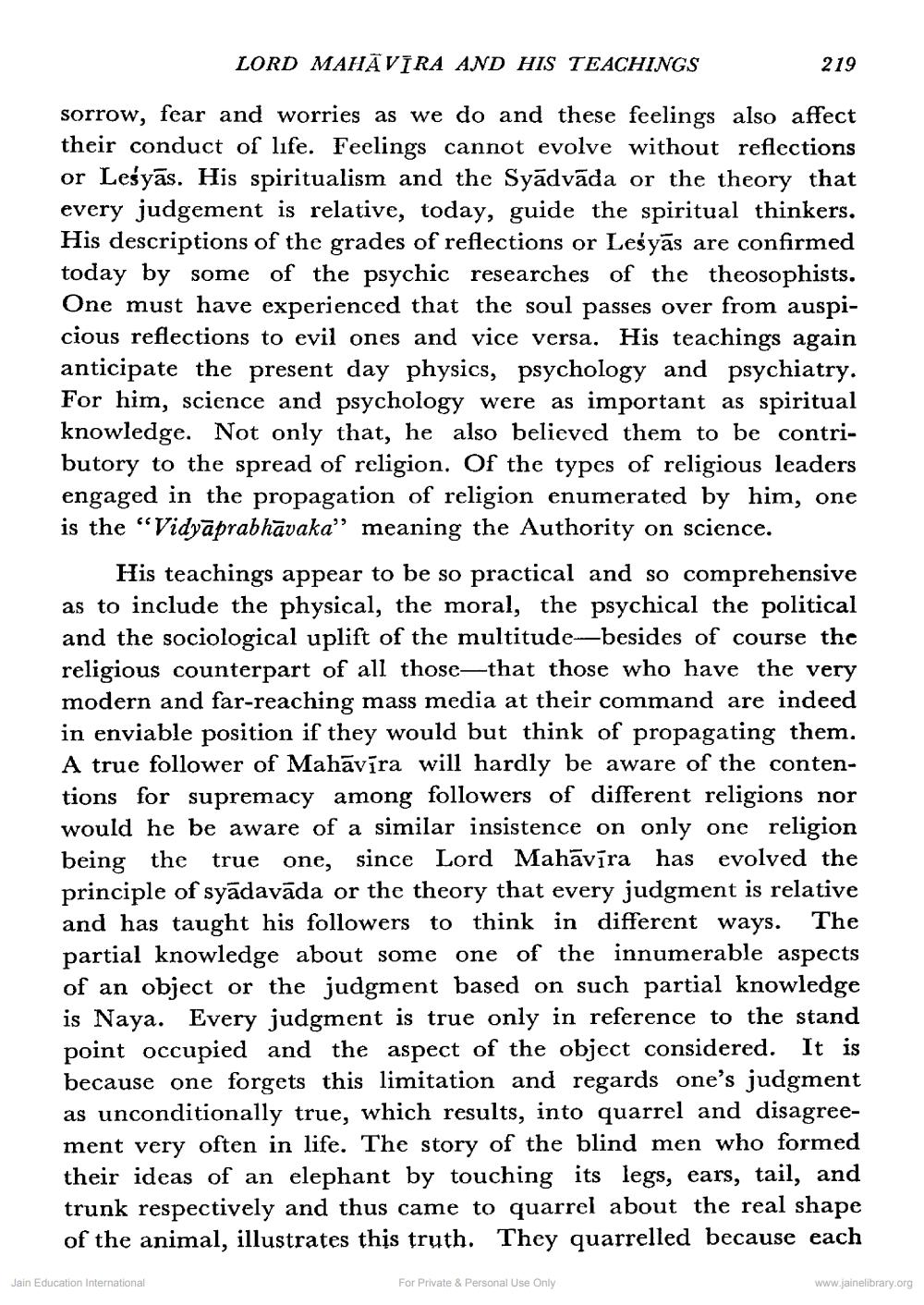________________
LORD MAHĀVĪRA AND HIS TEACHINGS
sorrow, fear and worries as we do and these feelings also affect their conduct of life. Feelings cannot evolve without reflections or Lesyas. His spiritualism and the Syadvada or the theory that every judgement is relative, today, guide the spiritual thinkers. His descriptions of the grades of reflections or Lesyas are confirmed today by some of the psychic researches of the theosophists. One must have experienced that the soul passes over from auspicious reflections to evil ones and vice versa. His teachings again anticipate the present day physics, psychology and psychiatry. For him, science and psychology were as important as spiritual knowledge. Not only that, he also believed them to be contributory to the spread of religion. Of the types of religious leaders engaged in the propagation of religion enumerated by him, one is the "Vidyaprabhāvaka” meaning the Authority on science.
His teachings appear to be so practical and so comprehensive as to include the physical, the moral, the psychical the political and the sociological uplift of the multitude-besides of course the religious counterpart of all those that those who have the very modern and far-reaching mass media at their command are indeed in enviable position if they would but think of propagating them. A true follower of Mahāvīra will hardly be aware of the contentions for supremacy among followers of different religions nor would he be aware of a similar insistence on only one religion being the true one, since Lord Mahavira has evolved the principle of syādavāda or the theory that every judgment is relative and has taught his followers to think in different ways. partial knowledge about some one of the innumerable aspects of an object or the judgment based on such partial knowledge is Naya. Every judgment is true only in reference to the stand point occupied and the aspect of the object considered. It is because one forgets this limitation and regards one's judgment as unconditionally true, which results, into quarrel and disagreement very often in life. The story of the blind men who formed their ideas of an elephant by touching its legs, ears, tail, and trunk respectively and thus came to quarrel about the real shape of the animal, illustrates this truth. They quarrelled because each
The
Jain Education International
219
For Private & Personal Use Only
www.jainelibrary.org




